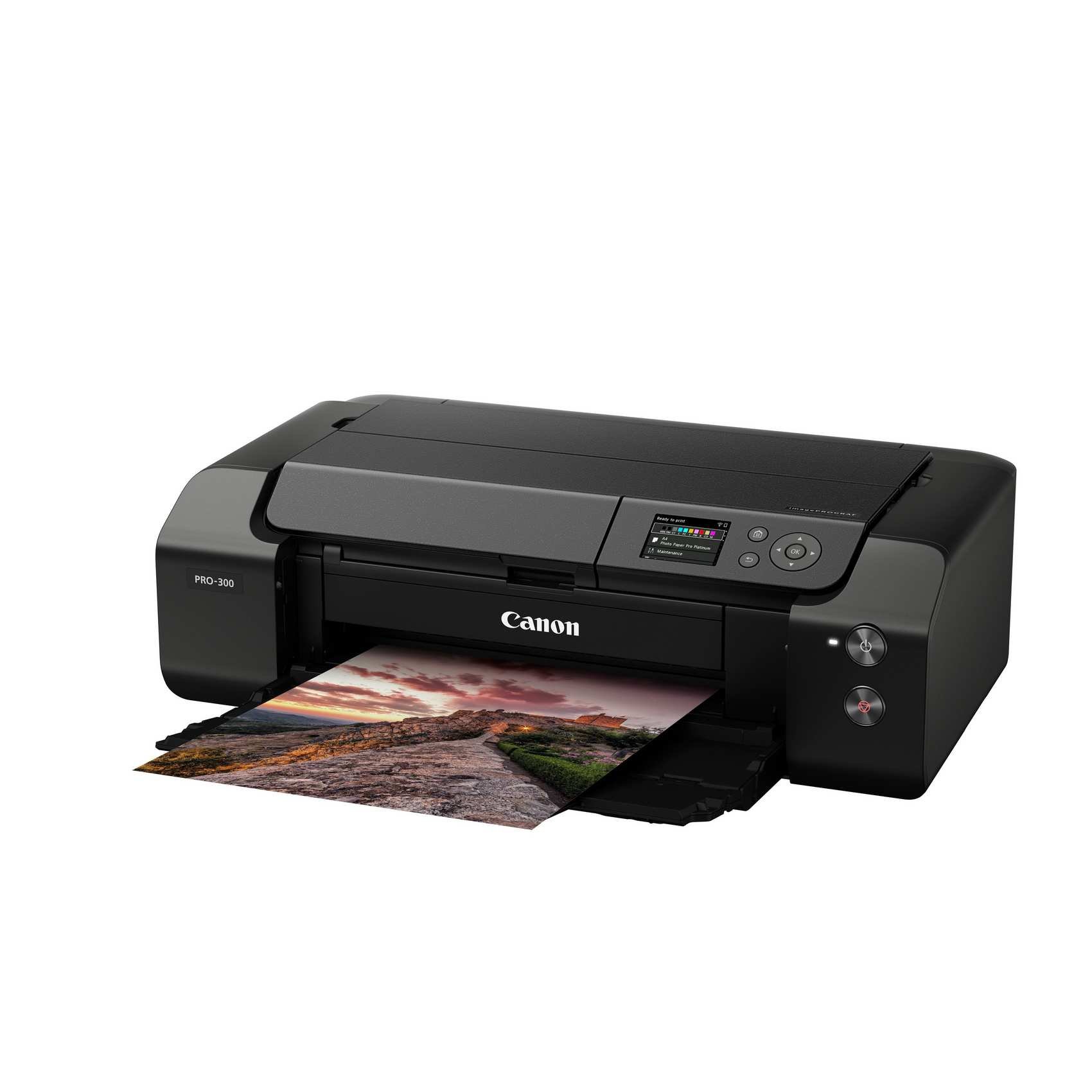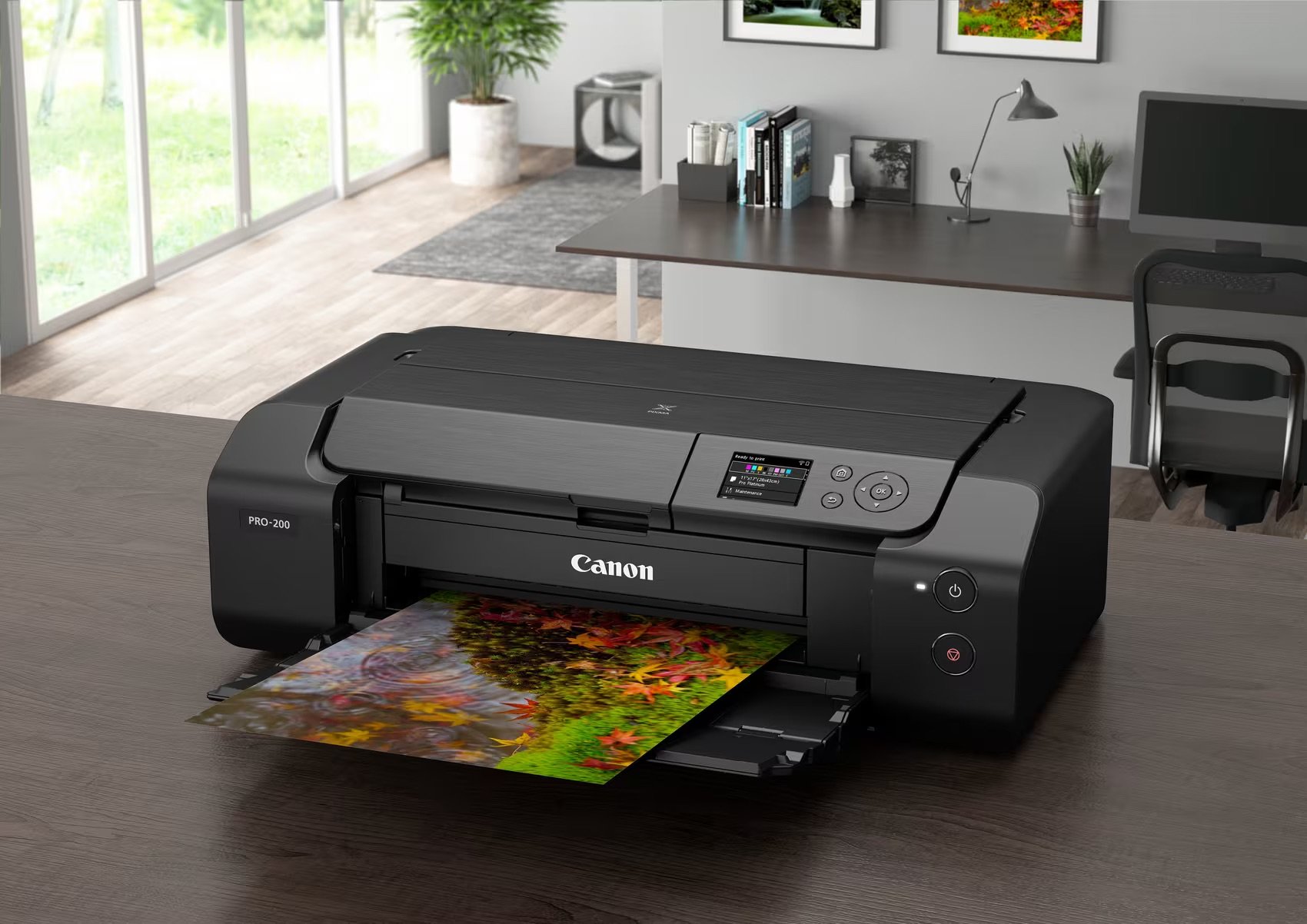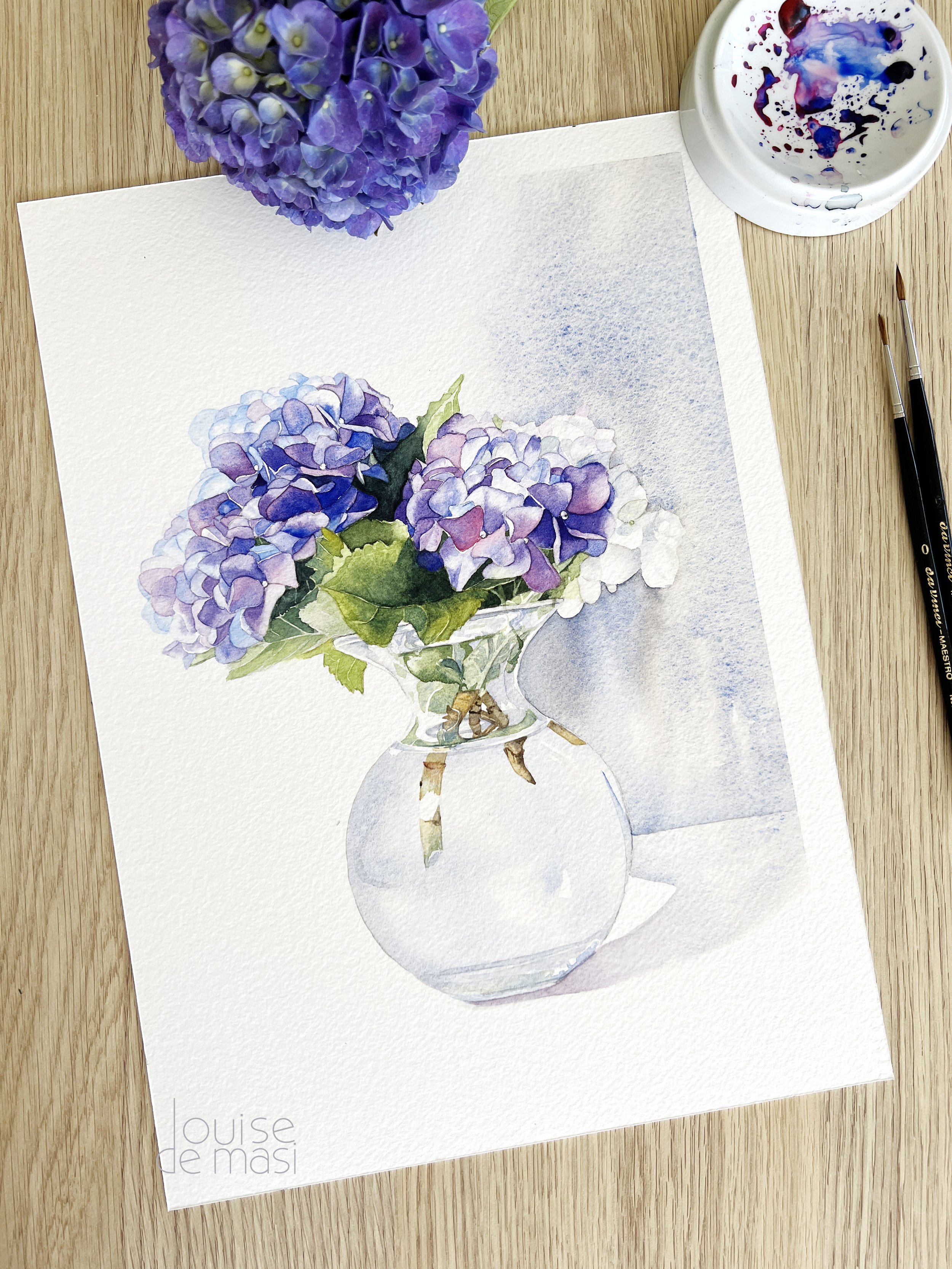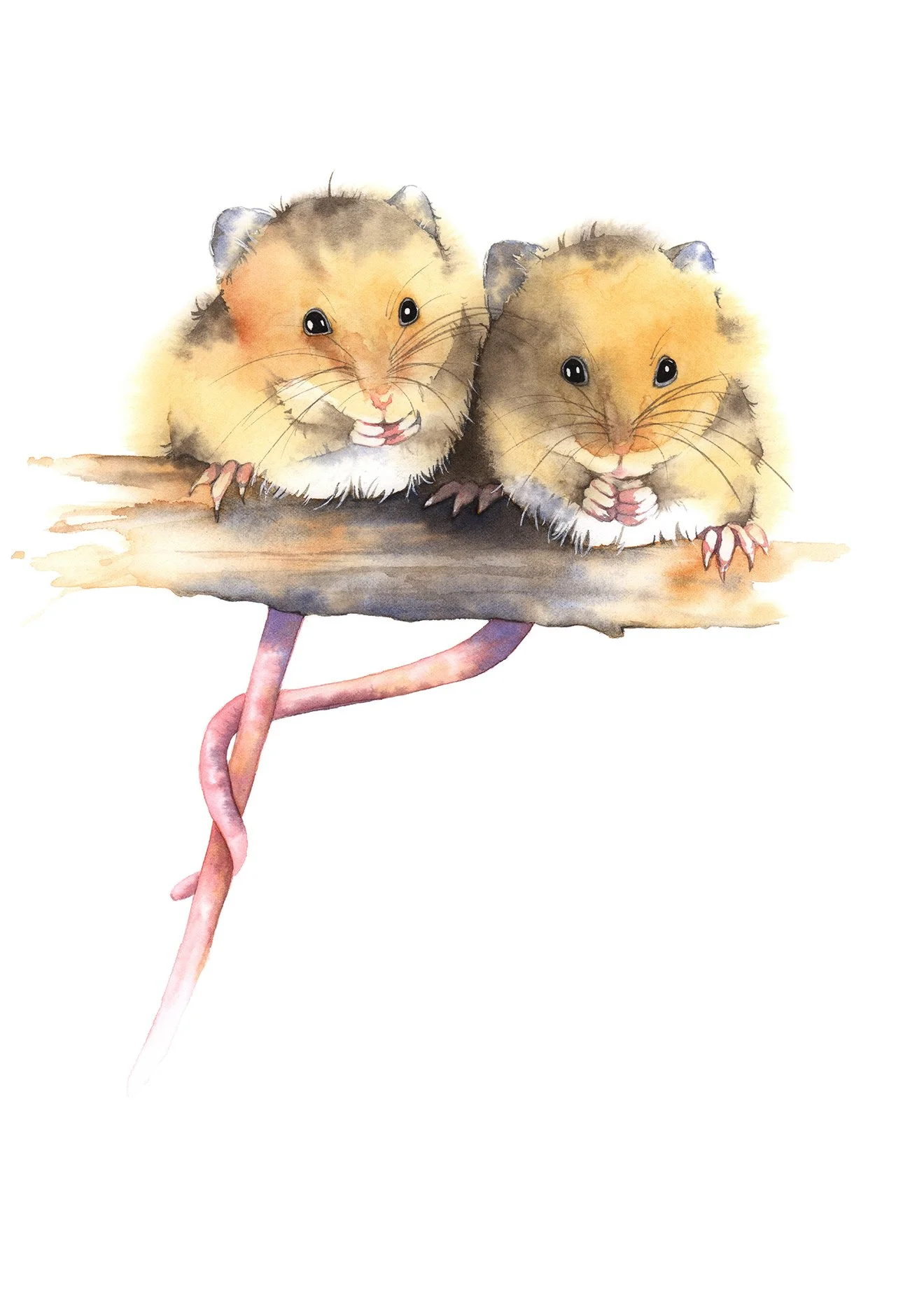The Ultimate Guide to Art Printers
Best Options for Printing Watercolour Artwork and the Best Papers to use
Hi. I'm Dom, Louise's husband and business Operations Manager and I’ve put this guide together based on research I did on reviews from artists, photographers, and printmakers around the world who have used and tested these printers. The pros and cons below are generally taken from other people’s experiences, as we’ve only personally used the Canon PRO-300, which is our current printer. If you’re looking for a printer for watercolour prints, this should give you a solid overview of the best options available.
Printing your watercolour artwork at home can be incredibly rewarding, whether you’re selling prints, making gifts, or just preserving your work. But if you want professional-quality results, you need the right printer, ink, and paper, otherwise your colours won’t be accurate, details will get lost, and prints might fade over time.
So what's the best option? If you are going to sell your prints then Pigment ink printers are your best option.
Unlike dye-based inks, pigment inks are archival, meaning your prints will last for decades without fading. Plus, they handle fine art papers better, giving you rich colours, deep blacks, and a true giclée finish.
In this guide, I’ll take you through the best pigment ink printers for watercolour prints, whether you’re on a budget or want a top-of-the-line setup. I’ll also cover the best fine art papers to use, so you can get the best results possible. But first what type of prints are we talking about?
Archival or Giclée
What is an Archival Print?
An archival print is a high-quality print designed to last for decades without fading or deteriorating. These prints use pigment-based inks and acid-free, archival paper, ensuring longevity and colour stability. Museums, galleries, and collectors prefer archival prints because they resist fading, discolouration, and paper degradation over time.
To be considered archival, a print should:
Use pigment inks, not dye-based inks (which fade faster)
Be printed on acid-free, pH-neutral fine art paper
Have a lifespan of 50 to 200+ years (depending on storage and display conditions)
What is a Giclée Print?
A Giclée print (pronounced “zhee-clay”) is a type of high-quality inkjet print made with pigment inks on fine art paper or canvas. The term comes from the French word gicler, meaning “to spray,” referring to the inkjet printing process used to create them.
To be considered a true giclée, a print must:
Be printed using a high-resolution inkjet printer (often 1200 dpi or higher)
Use pigment-based inks for longevity
Be printed on archival-quality paper or canvas
Have smooth gradients, fine details, and accurate colours
So, what’s the difference?
All giclée prints are archival prints, but not all archival prints are giclée prints.
Archival prints focus on longevity—they can be made using any professional printing method (including offset lithography or screen printing) as long as archival materials are used.
Giclée prints are high-resolution inkjet prints that meet archival standards.
For watercolour artists, giclée printing is the best way to reproduce paintings with rich colour and fine details, making them a top choice for selling fine art prints.
What to Look for in a Printer for Watercolour Prints
Pigment Ink vs Dye Ink
Pigment inks will last longer and resist fading, making them ideal for archival fine art prints.
Dye inks are more affordable and vibrant but fade faster over time.
Recommendation: For selling prints, always choose a pigment ink printer. While these printers are preferred for their longevity and quality, a dye ink printer may be suitable for less critical applications where cost is a factor and I'll cover a couple of these printers below as well.
Print Size & Borderless Printing
Consider what size prints you want:
A3+ 329 × 483mm (13” x 19”) is great for most artists.
A2 432 × 559mm (17” x 22”) or larger if you want oversized prints.
Borderless printing ensures a clean, professional finish.
We have always used an A3 printer as we offer A4 and A3 prints but we can take custom orders and have these professionally printed for us by a specialist printer. This is a good option for us and it saves the expense of a larger, more expensive, printer.
Paper Handling
Not all printers handle thicker fine art papers well so if you plan to print on textured papers, check that your printer supports media up to 350gsm or higher.
Preparing Your Artwork for Printing
Preparing your artwork for printing (scanning or digitising) is a crucial step in ensuring that your art prints turn out as desired. Here are some tips to help you prepare your artwork for printing:
Resolution: Ensure your artwork is in high resolution, at least 300 dpi (dots per inch). This will guarantee that your prints are clear and detailed, capturing every nuance of your watercolour artwork. For this you'll also need a high quality art scanner to scan your artwork.
Colour Mode: Convert your artwork to CMYK (cyan, magenta, yellow, and black) colour mode. This is the standard colour mode for printing and will help ensure that your colours are accurate and vibrant in the final print.
File Format: Save your artwork in a file format that is compatible with your printer, such as TIFF or JPEG. These formats preserve the quality of your image and are widely supported by most printers.
Editing: Edit your artwork to ensure it is free of any errors or imperfections. This may include adjusting the brightness, contrast, and colour balance to make sure your art prints look their best. For this you'll need a photo editing software such as Photoshop. Most printers come with their own printing software which may allow minor colour editing.
Proofing: Proof your artwork on a smaller scale before printing it full size. This will help you catch any errors or imperfections before they become a problem, saving you time and materials in the long run. Whenever we create a new print I'll do a smaller test print to check the colours against the original painting.
By following these steps, you can ensure that your art prints are of the highest quality, capturing the beauty and detail of your original watercolour artwork.
Best Printers for Watercolour Prints
Epson SureColor P900 – Best for Professionals
Why it’s great:
Epson printers, particularly the SureColor P900, are renowned for their archival quality and high resolution, making them ideal for professional artists.
UltraChrome PRO10 pigment inks (includes violet for better blues & purples)
Handles fine art paper up to 1.5mm thick
Borderless printing up to A2 432 × 559mm (17” x 22”)
Roll-feed option for panoramas
Things to consider:
High upfront cost 💰
Ink cartridges are small and expensive
Best for:
Serious artists who want museum-quality prints and need top-tier colour accuracy.
Canon imagePROGRAF PRO-300 – Best for High-Quality A3+ Prints
Why it’s great:
Uses 10 LUCIA PRO pigment inks for deep blacks and stunning gradients
Supports fine art papers up to 380gsm
A3+ 329 × 483mm (13” x 19”) borderless printing
Compact and more affordable than A2 printers
This model is perfect for artists who need good prints with deep blacks and stunning gradients. This is the printer we use and it creates a beautiful print.
Things to consider:
Slower print speeds compared to the Epson P900
No roll-feed option
Best for:
Artists looking for high-quality prints without the size and cost of an A2 printer.
Paper Pairing:
We always use Hahnemühle Matt FineArt 310gsm – A smooth, museum-grade cotton rag paper with incredible colour accuracy.
Epson EcoTank ET-8550 – Best Budget-Friendly Option
Why it’s great:
Refillable ink tanks – significantly lower printing costs
Prints A3+ 329 × 483mm (13” x 19”) borderless
Handles fine art paper better than most budget models
Things to consider:
Uses dye inks, which fade faster than pigment inks
Colour accuracy is not as strong as pro-grade Epson or Canon models
Best for:
Artists who print frequently and need an affordable ink solution.
HP DesignJet Z9+ – Best for Large-Format Fine Art Prints
Why it’s great:
9 pigment inks for exceptional colour accuracy
Prints up to A1+ 594mm (24” wide) – ideal for oversized artwork
Built-in spectrophotometer ensures perfect colour consistency
This printer is ideal for artists looking to produce larger prints, such as wall art and posters.
Things to consider:
Very expensive and large footprint
Overkill for most home studios
Best for:
Gallery-quality, large-format fine art prints.
Canon PIXMA PRO-200 – Best for Home Studios & Hobbyists
Why it’s great:
Uses 8 dye-based inks for rich, deep colours
A3+ 329 × 483mm(13” x 19”) borderless printing
More affordable than the PRO-300
Despite using dye-based inks, the Canon PIXMA PRO-200 offers excellent print quality for home studios and hobbyists.
Things to consider:
Dye inks fade faster than pigment inks
Not ideal for archival-quality prints
Best for:
Artists who want great colours on a budget but don’t need archival-quality prints.
Best Paper for Watercolour Prints
Choosing the right paper is just as important as selecting the right printer. Fine art papers designed for inkjet printers have special coatings that allow pigment inks to sit on the surface without bleeding, ensuring crisp details and vibrant colours.
Top Cotton Rag Papers (Best for Smooth Blends and Detail)
This is the paper we use for printing our watercolour prints for customers.
Hahnemühle Matt FineArt 310gsm – A high-quality, 100% cellulose paper with a subtle texture that works beautifully for watercolour-style prints.
Canson Infinity Rag Photographique – A smooth cotton paper that enhances colour depth and vibrancy, perfect for detailed paintings.
Epson Hot Press Bright – A smooth, bright white paper that captures fine details with precision.
Best Textured Fine Art Papers (Mimicking Watercolour Paper)
Hahnemühle William Turner 310gsm – A textured, cold-pressed paper with a highly absorbent surface, great for a natural watercolour look.
Canson Infinity Aquarelle Rag 310gsm – A natural white, rough-textured cotton paper, ideal for traditional watercolour aesthetics.
Epson Cold Press Bright – A thick, acid-free paper with a slight texture, excellent for archival prints.
Best Budget Fine Art Papers
Canon Premium Fine Art Smooth – An affordable and smooth paper that works well with Canon pigment printers.
Epson Signature Worthy Cold Press Natural – A cost-effective option for textured fine art prints with great longevity.
Colour Management and ICC Profiles
Colour management and ICC profiles are essential for achieving accurate colors in your art prints. Here are some tips to help you manage colors and use ICC profiles effectively:
Monitor Calibration: Calibrate your monitor to ensure that the colours you see on your screen are accurate. This will help you make adjustments to your artwork that will translate to the printed version, ensuring your art prints look exactly as you intended.
ICC Profiles: Use ICC profiles to ensure that your printer is producing accurate colours. ICC profiles are files that tell your printer how much ink to lay down on a specific paper type, helping to achieve consistent and precise colour reproduction. These are usually available to download from your paper supplier or printer manufacturer's website.
Paper Selection: Choose a paper that is compatible with your printer and ICC profiles. This will help ensure that your colours are accurate and your prints are of high quality. Different papers can affect the final appearance of your prints, so selecting the right one is crucial.
Soft Proofing: Soft proof your artwork to see how it will look when printed. This involves using software to simulate the print on your screen, allowing you to make adjustments before printing.
Hard Proofing: Hard proof your artwork by printing a small test print. This will help you ensure that your colours are accurate and your prints are of high quality, giving you a final check before committing to a full print run.
By managing your colours and using ICC profiles, you can achieve high quality art prints that faithfully reproduce the colours and details of your original watercolour artwork.
Essential Tips for Printing Watercolour Artwork
Calibrate Your Monitor
If your colours don’t match your prints, your screen might be too bright or uncalibrated. Use a colour calibration tool like the X-Rite i1 Display Pro.
Managing the printing process at home allows artists to maintain control over quality, production time, and costs.
Use the Right Print Settings
Choose Fine Art Paper mode in your printer settings.
Use ICC profiles for your printer-paper combination to get accurate colours.
Let Prints Dry Before Handling
Pigment ink takes longer to dry. Wait at least 24 hours before framing or packaging your prints.
Store Prints Properly
Use acid-free sleeves or archival storage boxes to protect prints from dust and fading. Proper storage is crucial for artists who sell art prints, ensuring that the prints remain in pristine condition for their customers.
Final Thoughts – Which Printer Should You Choose?
For professional fine art prints, choose Epson SureColor P900.
For high-quality prints at a lower price, go for Canon PRO-300.
For budget-conscious artists, Epson EcoTank ET-8550 is a cost-effective solution.
For large-format fine art prints, the HP DesignJet Z9+ is unbeatable.
For beginners & home studios, Canon PIXMA PRO-200 is an excellent affordable choice.
I hope you found this informative and helpful.
Dom.
If you are interested in learning to paint in watercolour, Louise has over 200 online, voiced over watercolour tutorials for all skill levels.
Disclosure: This post contains affiliate links, which means we may earn a commission if you make a purchase through my links at no extra cost to you.














